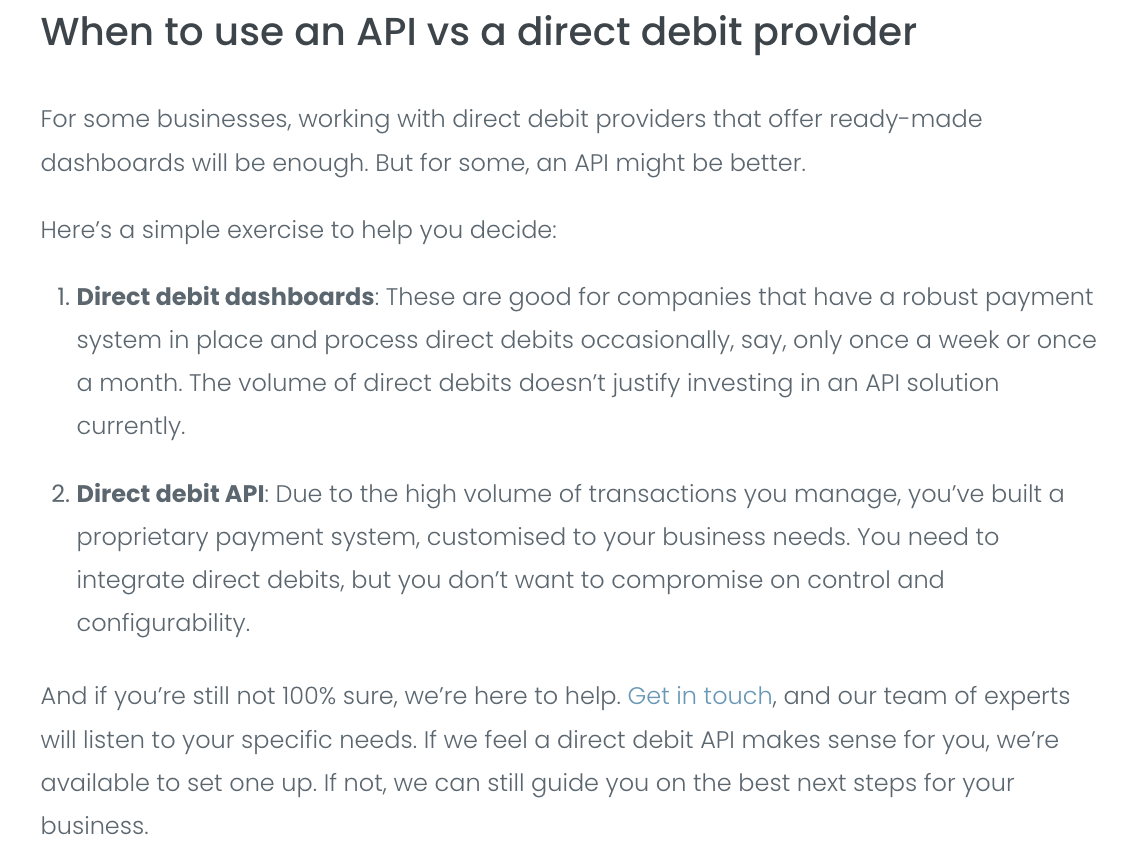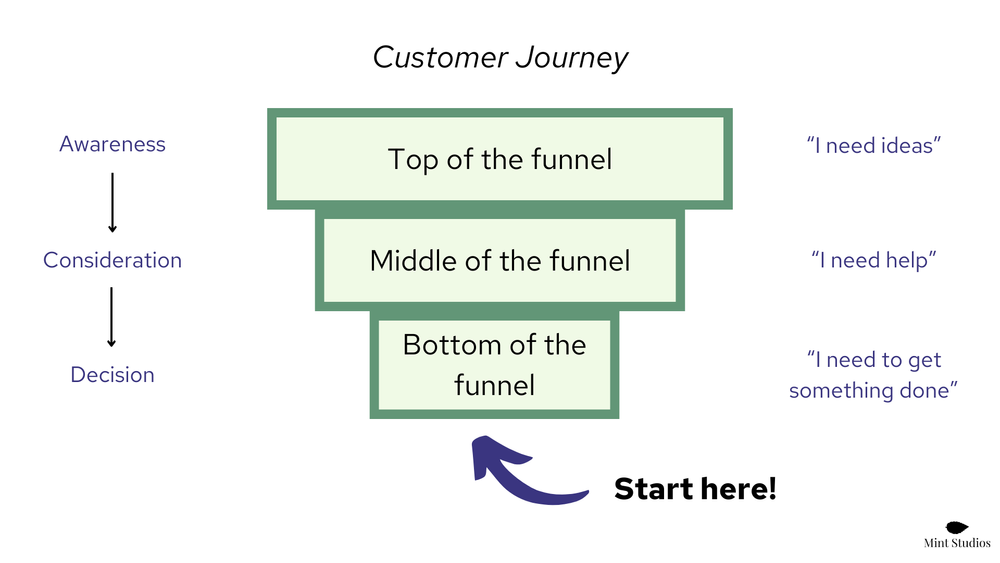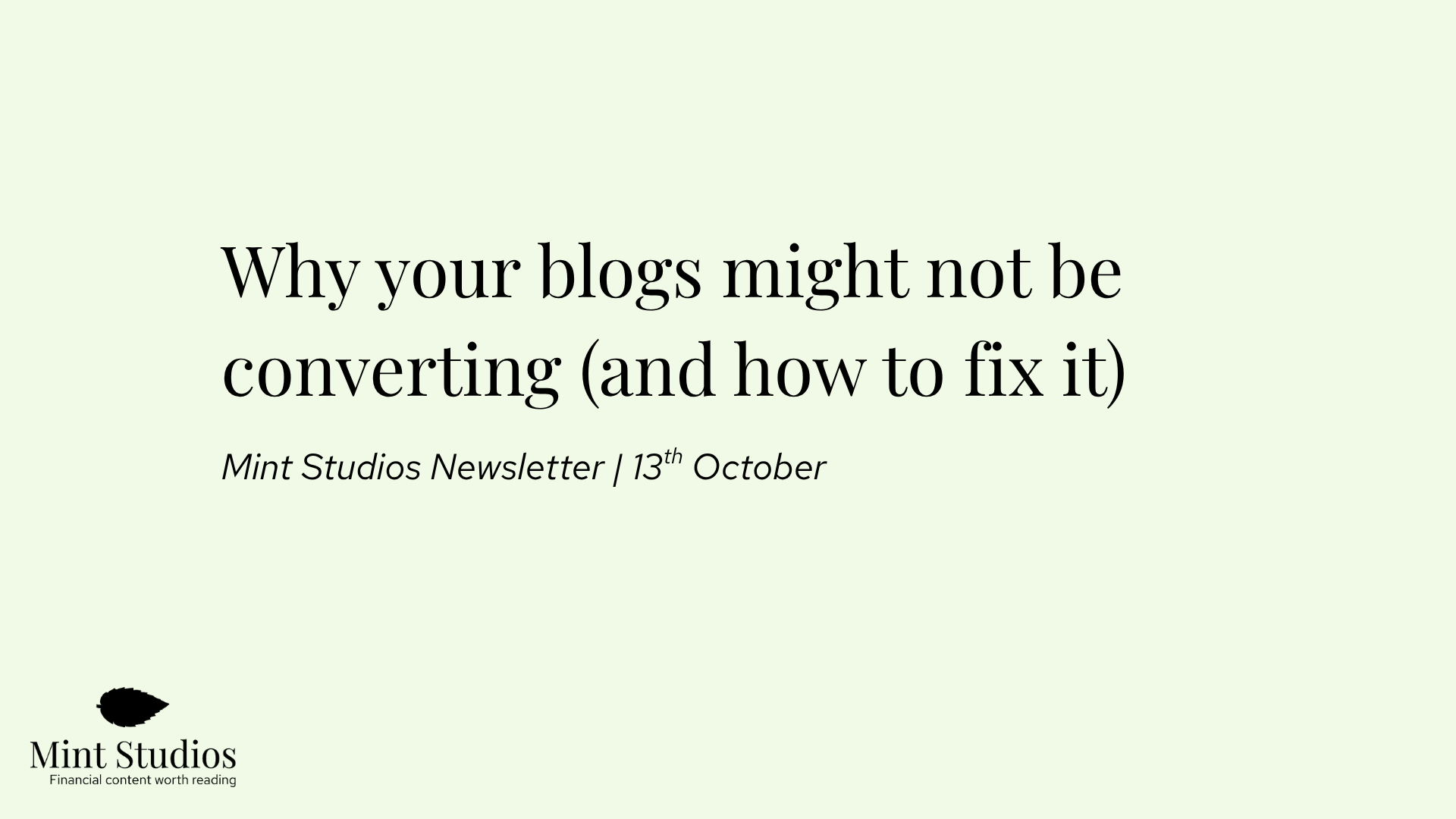Results overview:
- Leads through the blog grew by 350%
- Conversion rate of blog leads to opportunity grew to almost 50%
- Brought in multiple SQLs worth $150k+
- Turned organic into a key acquisition channel for the company
The case study:
We're now generating enough qualified leads for Zai that we effectively pay for ourselves (and a lot more!).
We’ve (and still are) worked with Zai for close to a year. By month three, we were helping Zai’s content team bring in multiple high quality SQLs per month.
In this case study we’ll cover:
- The situation
- The results
- How we did it
The situation: what Zai needed
Zai is a B2B payment orchestration company, and is the sister company to B2C payments company CurrencyFair. Zai focuses on helping fintech and non fintech companies to leverage payments orchestration technology to improve operational efficiency. With their API, Zai’s customers can collect, split and make complex payments, as well as reconcile and manage custom payment workflows.
Andrea, Zai’s CMO, describes the situation as:
“We were a new brand, expanding globally with aggressive growth targets. Coupled with the fact that we are B2B with long sales cycles, it was imperative that we accelerated the lead-to-customer journey and get to revenue quickly.
We decided to invest more heavily in the 5%-10% of potential customers that are ‘in-market’, those that are actively searching for a solution to a pre-defined problem. And the way to do that is with BOFU content.”
The results
Multiple SQLs per month: new contacts, with recurring monthly revenue
We grew their total leads from the blog by 350%, starting with just a handful per month to one of the key acquisition channels for the company. Of those leads, multiple turned into opportunities and deals per month, with a lead to opportunity conversion rate of almost 50%.
With our bottom of the funnel content strategy, we were able to target technology and product managers who were a lot closer to becoming a customer: they understood their problem, and were actively looking for a solution for it.
These keyphrases had very low traffic: but that’s fine, because our main objective was SQLs, not traffic. We care more about who is coming to the Zai site, not how many.
There were multiple benefits to this:
- The quality standard for this type of content already on the internet was low, so it was easier to rank high quite quickly.
- Because we were specific in who we targeted, we knew people searching this were at the bottom of the funnel and ready to convert.
- Since these are product related keywords, we could talk about Zai’s product in-depth without coming across as “salesy”. This also helped with conversions.
Because we were using Hubspot, we could easily track who converted immediately after reading a blog post, vs those who were “influenced” by a blog post (meaning, they entered via another page, read a blog post, and then converted somewhere else). Here’s the screenshot of the dashboard at a certain period of time:

We could track which contacts came in via which blog posts:

The Hubspot was also linked to their Salesforce, so we could also track the value of the SQLs that we were bringing in (the values below are examples and are not indicative of Zai’s actual deal amount):

In-depth, advanced content that positions them as an expert
Zai is targeting Heads of Product, product managers and tech leads. In other words, people who know their stuff. So we had to make sure that the stuff we’re writing is for their level.
With our methodology we were able to:
- Write comprehensive, in-depth payments content that couldn’t be found anywhere else online.
- Write in detail about how the Zai product worked, along with diagrams and examples.
- Include case studies and success stories to illustrate how a specific feature worked.
- Write content that touched on current events, but that was still actionable and compliant.
Here are some screenshots of how in-depth we were able to go in some of these articles:



Andrea summarised the results by saying:
“The Mint solution is specialised, out-come driven and transparent. The team are experts in what they do and are a joy to work with.”
How did we do it? Bottom of the funnel content and interviews with salespeople
A lot of people don’t believe you can generate sales from the blog. But we argue that there’s a huge opportunity for content marketing in the payments industry, and that in fact, most companies are underusing their website blogs.
If you know people who don’t believe the blog can bring in leads and sales, then feel free to send them this case study. Because if that were true, we would not be generating multiple SQLs per month for Zai. Here are some more details about our methodology:
Content strategy that focuses on Bottom of the Funnel
If you’ve been following Mint Studios for a while, then you know this is our bread and butter for companies who are looking to use content for customer acquisition.
Most companies will start with Top of the Funnel content and work their way down. There is nothing wrong with TOFU content – but if your company is focused on generating revenue, it makes more sense to target those customers who are closer to buying.

With Bottom of the Funnel, you’ll get results sooner. And if your company has a long sales cycle (as is the case with payment companies) even someone at the bottom of the funnel will take long to account for.
In order to create a strategy that focuses on Bottom of the Funnel, we spent the first month with Zai sitting down with people from sales, product and marketing to understand their ideal customer and their pain points. We asked them questions such as:
- What was the last prospect/company that you had a really easy time closing? What type of prospects are the ones that are the easiest to close?
- What are you usually compared to? What are the alternatives?
- What is the most common reason for buying your product?
- How do they currently solve X and how much does it cost to do so?
- What happened last time their problem came up? What did they do?
The answers to these questions allowed us to understand what keyphrases they would be using when researching online and who we should be targeting.
These conversations set the groundwork to target people who were actively looking for a solution to their payment problem, rather than people who might just be learning about payments.
Read more: How to Do Research for Bottom of the Funnel Content Marketing
As Andrea says:
“We wanted to move beyond ‘content output’ and focus on ‘content outcome’, specifically commercial outcome. Our team and the Mint team very quickly became hyper-aligned around the commercial objective of the BOFU content, having this shared target meant we got to results faster.”
Content based on interviews with salespeople
Since Zai is a payments company, they have some incredibly knowledgeable salespeople and product people who know payments inside out. As in many payment companies, these people are a goldmine of information.
With our methodology, we like to work as an extension of the marketing team, where our job is to extract that information from the internal experts and turn those insights into content.
Which is why nearly every single piece of content was based on an interview with a salesperson on the Zai team. At one point, we had a 30 min recurring weekly call with a salesperson based in Australia, where we would ask all the relevant questions that we would then turn into an article.
This allowed us to:
- Include unique insights that couldn’t be found anywhere else online.
- Talk about the product in-depth and from the right angle.
- Include real life examples and case studies where it made sense.
- Base an article on a salesperson’s experience.
Since the product is relatively complex, there were quite a few back and forths on the first few articles. But as an extension of the marketing team, it was our job to understand the product and figure out the best way to communicate that in an article.
Read more: Why You Should Create Content Based on Interviews With Experts
As Andrea says:
“The exercise of having external people delve into our product, meet with our subject matter experts and communicate our proposition through an unbiased lens means that we weren’t confined by our own internal echo chamber. It’s too easy to believe your own hype, the Mint team kept us grounded and ensured that our content followed suit.
Having the kind of working relationship where it really feels like we were on the same team, means that assessment of the BOFU content performance is about continuous improvement and optimisation and not about assigning fault, blame or excuses which can often happen in client/agency relationships.”
As Andrea mentions, ultimately, the success of our work together and relationship is because we are aligned on goals and we were able to be honest with each other. From the beginning, the Zai team agreed that the main goal is SQLs, and not traffic or number of blog posts.
This alignment has allowed us to create content that actually helps them meet their goals, that is in-depth and aligned with their brand. The Zai team is one of the best we have worked with: their experts are second to none, and their product is fascinating to write about.
We believe that there is a big opportunity for payments companies to share their incredible expertise via content and to use it for customer acquisition. Zai is an example of a company that is taking advantage of that opportunity, and has the results to show for it.











